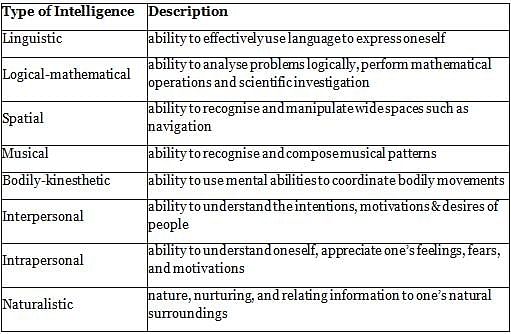MAHA TET Paper 2: Child Development and Pedagogy Test - 6 (Science and Mathematics) - MAHA TET MCQ
30 Questions MCQ Test - MAHA TET Paper 2: Child Development and Pedagogy Test - 6 (Science and Mathematics)
Which of the following indicates the learner's higher cognitive ability?
Given below are two statements, one labeled as Assertion A) and the other labeled as Reason R). Read the statements and choose the correct answer using the code given below.
Assertion A): In an inclusive classroom, close-ended questions should be asked to foster the creativity of children.
Reason R): Close-ended questions give students the opportunity to elaborate their point of view as they have more than one correct answer.
Assertion A): In an inclusive classroom, close-ended questions should be asked to foster the creativity of children.
Reason R): Close-ended questions give students the opportunity to elaborate their point of view as they have more than one correct answer.
| 1 Crore+ students have signed up on EduRev. Have you? Download the App |
The hyperactive children need:
Consider the following statements and identify the correct one from mastery learning point of view:
"If a child is given task that is little difficult from his level, then he connects better and learns." Which area of development of children is indicated by Lev Vygotsky in above statement ?
Which of the following psychologists is associated with ‘language development’?
Generally, what is the intelligence quotient of a slow learner?
As a teacher in a class, you are strongly opposed to ragging, and keeping this in mind, you put up posters related to it throughout the school and also form a committee, children who join you consider this idea to be good, so what level of Kohlberg will it fall under?
Which of the following statement are best suited to cater to individual differences of students?
(i) The curriculum should be organized and made flexible.
(ii) A separate arrangement should be made for the education of exceptional children.
(iii) The methods of teaching should be in keeping with the needs of the individuals.
(iv) The division in classes should be in heterogenous groupings.
A child is not suitable to learn a task properly because of non-attainment of age. The learning factor involved is
Which statement is true about the Post conventional morality stage of Kohlberg?
Which type of learning mainly influences personality of the child?
Frobel's most important contribution to education was his development of which of the following?
Tom's mother introduced Tom to his neighbor's dog and told him that this animal has four legs and a tail. The next time he saw a cat on the road and called it a dog. His mother explained to him the difference between a cat and a dog. Now Tom knows the difference between a cat and a dog. This process is called:
According to Vygotsky, ‘the relationship between development and learning’ summarizes best by which among the following option given below:
The word 'Compulsory' in 'The Right to Free and Compulsory Education 2009' means that
Which of the following type of thinking will help in the development of problem-solving skills?
Vygotsky's social development theory laid the foundations for:
Extinction of a response is more difficult, following
Assertion(A): Family, Neighbours, plays an important role in the language development of the child.
Reason(R): Socio-cultural environment emphasizes the learning of the language of a child and children can learn their native language through intimation.
According to Howard Gardner, _________ is not a type of intelligence.
'Prediction' is the characteristic of which of the following psychological concepts?
Main aspect of Chomsky’s theory
Which of the following activities defines cephalocaudal principle?
Systematic presentation of concepts may be related with which of the following principles of development?
Which of the following tool is best use in ICT for student with visually impairment?
According to Piaget’s cognitive development theory, accommodation is referred to:
Consider the following statements and identify the correct one from mastery learning point of view:
"If a child is given task that is little difficult from his level, then he connects better and learns." Which area of development of children is indicated by Lev Vygotsky in above statement ?
Individuals who have the ability to understand the motives, feelings and behaviours of others to bond with them are high on_______intelligence in Howard Gardner’s theory.



















